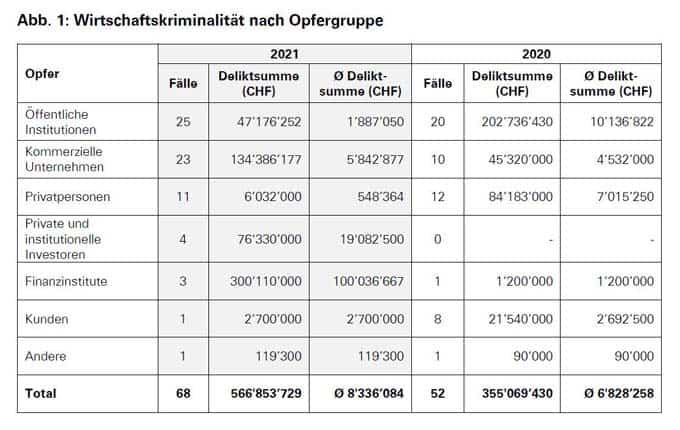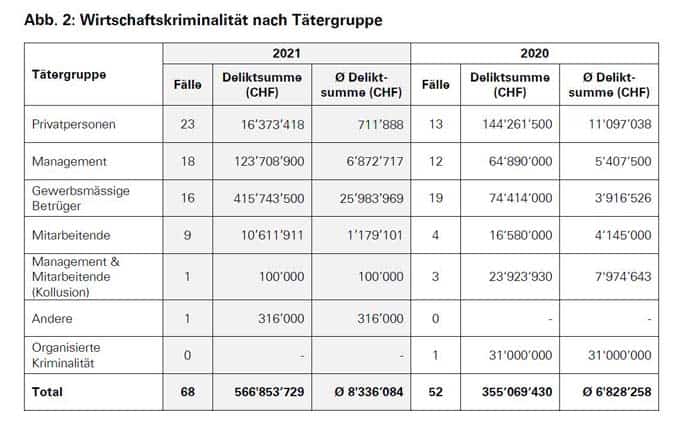Public institutions targeted by white-collar criminals
According to the latest "KPMG Forensic Fraud Barometer", Swiss courts dealt with 68 cases of white-collar crime in 2021. The total damage of CHF 567 million, including a CHF 300 million case, was 37 percent higher than in the previous year. The actual figures are likely to be much higher, as many cases are not even reported [...]

Public institutions most frequently affected by white-collar crime
With 25 out of a total of 68 cases heard by the courts, public institutions were particularly frequently targeted by white-collar criminals. In seven cases, there were convictions related to illegally obtained Covid 19 loans. "I expect that we will see more such cases in the next editions of our Fraud Barometer due to a delayed effect," explains Anne van Heerden, Head of Forensics at KPMG.
Private individuals were the largest group of offenders
Commercial fraudsters were replaced by private individuals as the largest group of offenders in 2021. This group accounted for 23 out of 68 of all negotiated white-collar offenses, or one third. The average offense amount was around CHF 700,000. With 18 cases with a total offense amount of more than CHF 123 million, employees in executive functions ("management") were the second largest offender group. The average amount of crime per case was almost CHF 7 million, which is around ten times higher than for the perpetrator group of private individuals.
Most cases in Zurich, the largest in Bellinzona
Zürich war letztes Jahr am stärksten von Wirtschaftskriminalität betroffen: mit 22 von 68 Fällen entfielen knapp ein Drittel der verhandelten Straftaten auf diese Region – im Vorjahr waren es noch acht. In der Genferseeregion, die im Vorjahr mit 19 am meisten Wirtschaftsdelikte verzeichnete, wurden 2021 nur sechs Fälle verhandelt. Die grössten Fälle von Wirtschaftskriminalität wurden am Bundesstrafgericht in Bellinzona verhandelt, darunter auch der grösste Fall mit einer Deliktsumme von CHF 300 Mio. Die durchschnittliche Deliktsumme der grössten sechs Fälle betrug über CHF 70 Mio. Sogar unter Herausrechnung des grössten Delikts bzw. Schadenssumme von CHF 300 Mio. betrugen die in Bellinzona verhandelten durchschnittlichen Deliktsummen ein Vielfaches derjenigen der anderen Regionen.(Social) insurance fraud most common offenses
The most frequent type of offense in 2021 was (social) insurance fraud, with 20 cases, which was litigated much more frequently compared to the previous year (2020: 8 cases). This is partly due to the seven fraud cases related to Covid 19 loans mentioned earlier. "White-collar criminals try to exploit new legal frameworks and loopholes in the system immediately and specifically for their own purposes," says forensic scientist Anne van Heerden. "Unsurprisingly, this was also the case with Covid 19 loans." Also on the rise last year were court cases involving fraud. In these cases, perpetrators convince the victim to make an advance payment under false pretenses, for example, but the payment is not followed by the agreed-upon or promised service. Source and further information: KPMGThis article originally appeared on m-q.ch - https://www.m-q.ch/de/oeffentliche-institutionen-im-visier-von-wirtschaftskriminellen16335-2/









